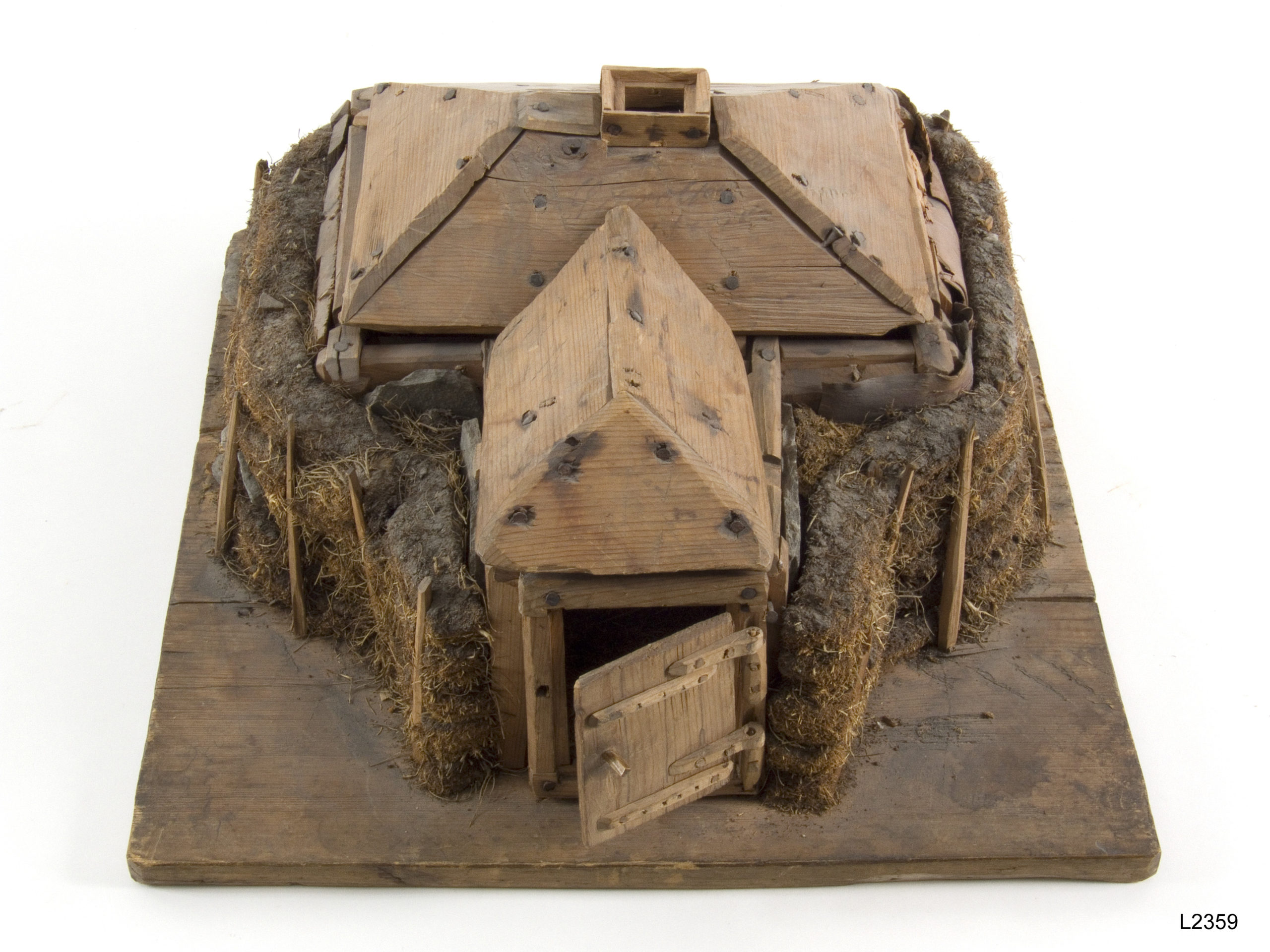The Turf Hut Model
The disappearance of the Coastal Sámi As a cultural display category
On a shelf in the basement of the Arctic University Museum of Norway in Tromsø sits a model of a Sámi turf hut. The model is carefully made from wood, birch bark, turf and small stones, and unlike turf huts used a by nomadic Sámi reindeer herding communities, the model has stalls for livestock. According to the museum catalogue the model was made by “Sjur Olsen Korsfjord Talvik” for The General Exposition for Tromsø Diocese in 1870. Most likely it was based on the Olsen family dwelling in Fielvuotna (Korsfjord), a coastal Sámi community to the south of Áltá in the previous parish of Dálbmeluokta (Talvik). The term “coastal Sámi” was coined by missionaries in the early 1700s to describe people in coastal areas who spoke Sámi, lived on farms and attended church regularly. However, Sámi who subsisted on fishing and farming are known in historical sources since the 1500s.
According to the census for Talvik, 1865, Olsen was a 45-year old fisher and farmer who lived at “Guodegieddo” with his wife, five children, a maidservant, a fish- and farmhand and another fisher. He was registered as Sámi (lap) but spoke Norwegian (taler norsk). Ten years later, in 1875, the family were still living in Korsfjord, probably at the same place but now registered with a Norwegian name – “Sjurseng” – the grassland of Sjur. Olsen was still registered as “Lappish” and as speaking Norwegian, but this time the registrar has added under the heading remarks – “speaks Norwegian customarily” (taler norsk sædvanlig).
In my project, I have investigated how cultural assimilation processes along with an almost universal emphasis by the tourist industry, museums, scholars and others on the Sámi as reindeer herders, since the last part of the 19th century, led to a marginalization of the Norwegian coastal Sámi – much like the Inari Sámi in Finland and the forest Sámi in Sweden. Only herders with a nomadic lifestyle were considered to be ‘genuine’ Sámi. Those who were not became invisible in the policy field as well as in Sámi research and Sámi cultural display.
Emphasis on the Sámi as reindeer herders became a dominant practice in cultural displays both in Norway and abroad from the 1870s. Simultaneously, the coastal Sámi seem to have disappeared as a cultural display category, also at exhibitions outside Tromsø.
The point of departure has been two industrial expositions held in Tromsø in 1870 and 1894. At The General Exposition for Tromsø Diocese in 1870, coastal Sámi culture was a prominent part of the display. In addition to the reconstruction of a coastal Sámi dwelling place inhabited by a family from Unjárgga (Nesseby), various coastal Sámi objects were exhibited, such as Olsen’s turf hut model. However, when The General Exposition for Fisheries, Agriculture and Industry was held in Tromsø in 1894, the coastal Sámi as a display category was no longer present. Instead, the focus was exclusively on nomadic reindeer herding Sámi.
Emphasis on the Sámi as reindeer herders became a dominant practice in cultural displays both in Norway and abroad from the 1870s. Simultaneously, the coastal Sámi seem to have disappeared as a cultural display category, also at exhibitions outside Tromsø. Olsen’s model in the museum basement seems to speak to this marginalization – the museum was established in 1872 based on objects from the 1870 exposition. Through the act of not giving attention to coastal Sámi culture in displays, museums lent themselves to Norwegian assimilation policies. As an effect, the coastal Sámi have remained largely unknown among the Norwegian public, regarding both their historical identities and as contemporary societies.


